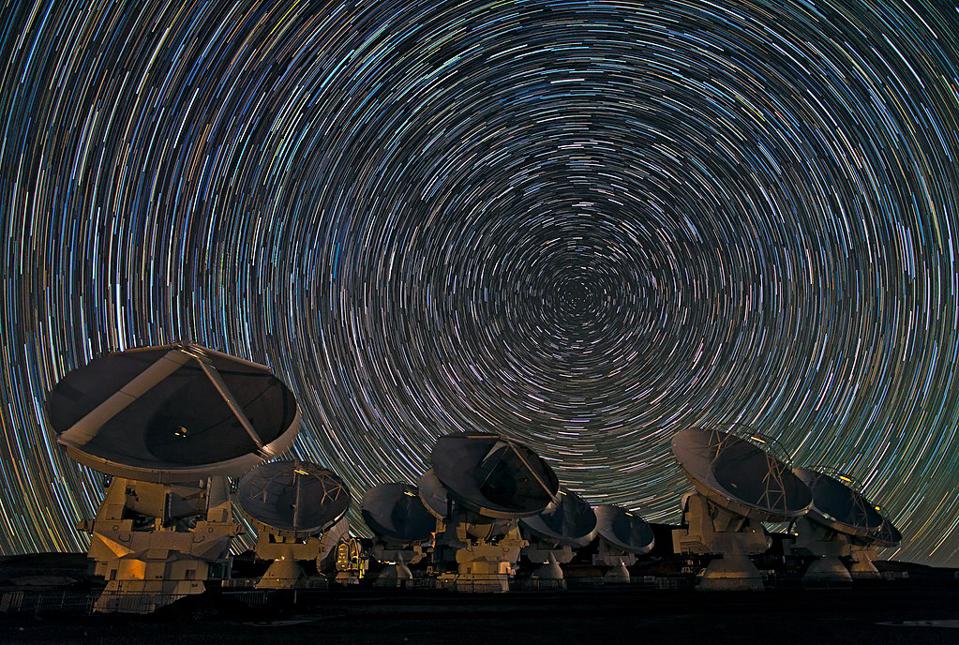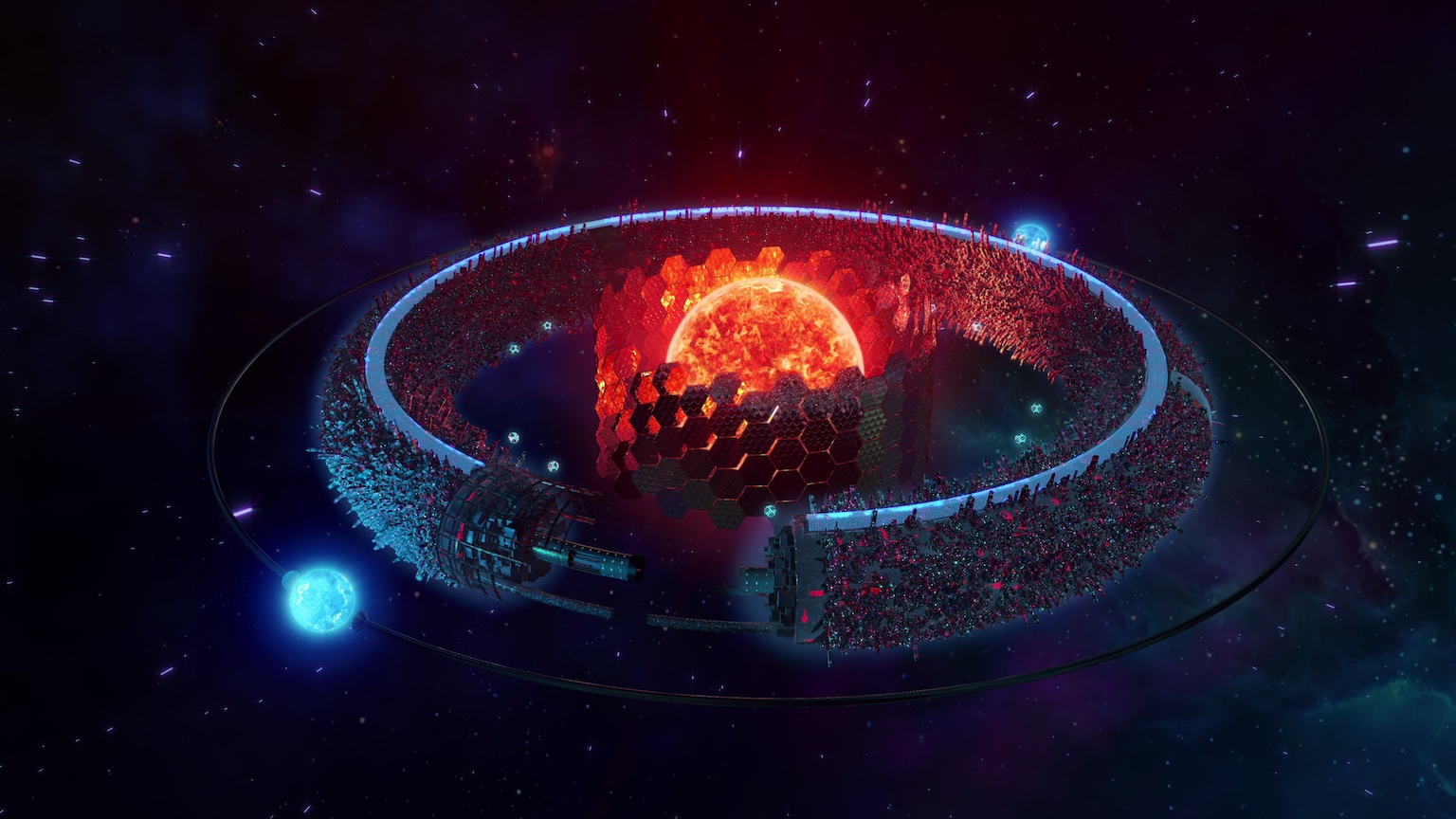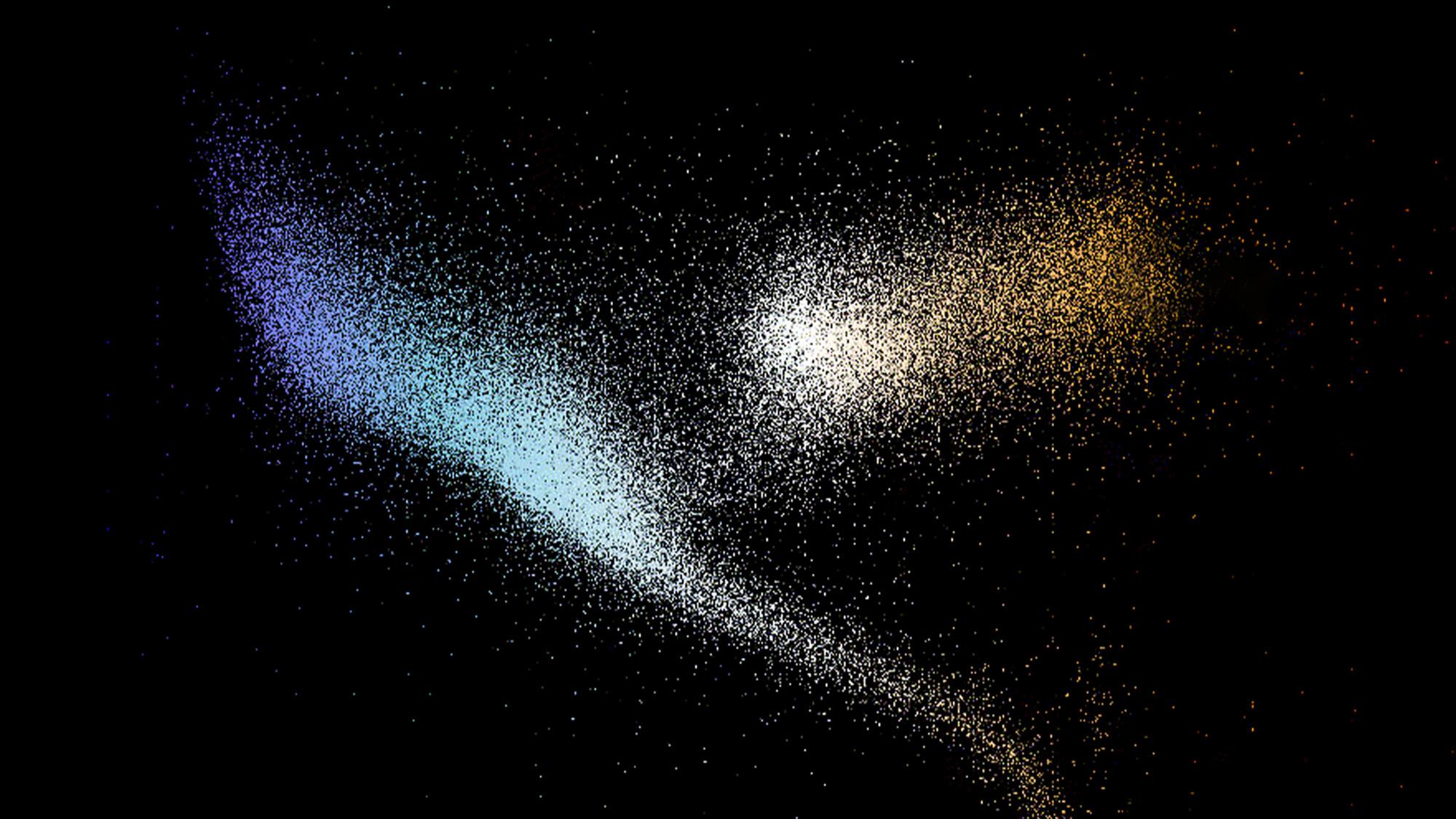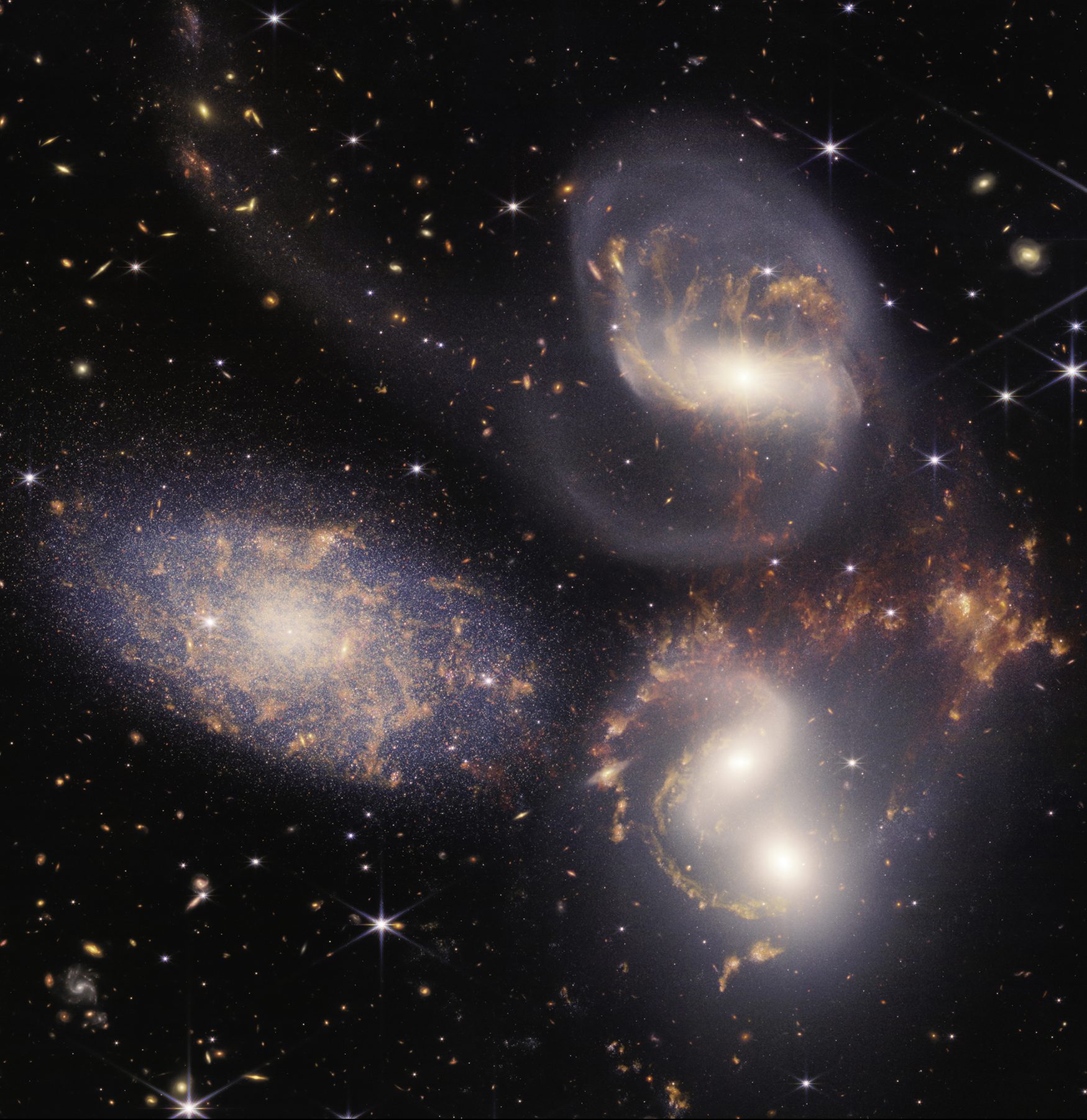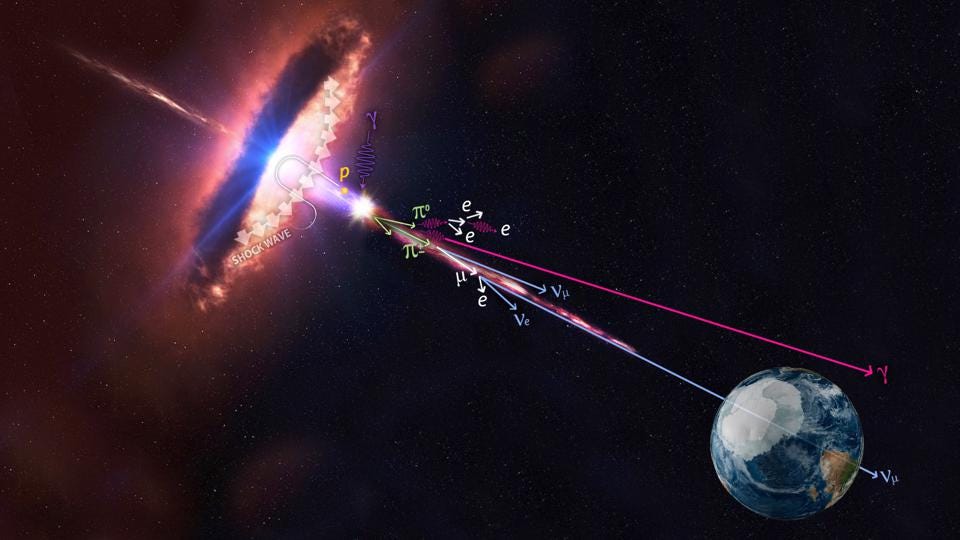Edwin Hubble and a really big telescope: How cosmology was born
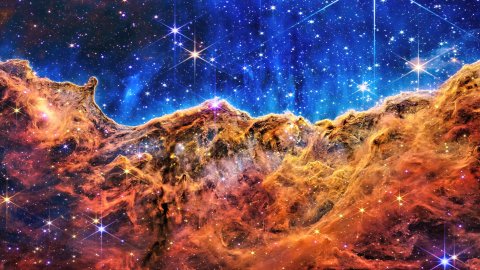
- Modern cosmology, the study of the universe and its history, is a great scientific triumph, a spectacular combination of theory and observation.
- The availability of powerful telescopes allowed Edwin Hubble to show that the Milky Way is one among many galaxies out there, and that galaxies are moving away from one another.
- The discovery of cosmic expansion made it clear that the Universe has a story with a nebulous beginning and no obvious end. In the next few weeks, we will explore the main successes and the many mysteries that remain in our telling of the cosmic story.
The Universe only has a history because we are here to tell it.
Sure, the cosmic story began well before our ancestors walked the Earth. If we compress the Universe’s 13.8 billion years into a single 24-hour frame, Homo sapiens arrives around 1.88 seconds before midnight, 300,000 years ago. But the Universe that abided before our stories was mute. It followed its evolution from the Big Bang onward without creatures capable of reconstructing how primordial matter turned into stars and planets. And even if there are other intelligences out there capable of and interested in telling the cosmic history, they will do it in their own way. Their cosmic story will not be like ours.
During the 20th century, modern cosmology emerged from speculative mathematics to blossom into a data-rich science. This revolution in our understanding of the Universe involved a combination of extraordinary theoretical and technological advances. It is nothing short of spectacular. The mirrors that capture light in optical telescopes grew. From the 100-inch (2.54-meter) telescope at Mount Wilson — the one Edwin Hubble used to discover the expansion of the Universe in 1929 — we came to use giants like the 36-foot South African Large Telescope. Many students from Dartmouth, the university where I work, are there right now, learning and exploring the Cosmos.
Still larger giant telescopes are about to begin operating, like the Extremely Large Telescope, or ELT, located at the Atacama desert in Chile. The ELT has a mirror with a diameter of 128 feet, and it is but one of many such telescopes. The ELT will collect 100 million times more light than the human eye, and it boasts a dome that weighs 6,000 tons.
Not satisfied with our ground-based telescopes, we have now launched our searching eyes to space, with telescopes mounted on satellite observatories like the Hubble Space Telescope, in operation since 1990, and, of course, the amazing James Webb Space Telescope, which launched just last year. Add to those ground-based and space-borne telescopes others that search for light that is not visible to the human eye — from radio to microwave to infrared to gamma rays, and even gravitational waves — and our view of the Cosmos is multiplied a thousandfold.
The more we learn about the Universe, the stranger and more fascinating it becomes. Our modern narrative of creation — for this is what cosmology is about — is a tale of matter growing in complexity from its simplest components, the elementary particles, into atoms, stars, galaxies, planets, and life. Every new discovery brings about new questions, making for endless excitement and drama. Since science is a flirtation with the unknown, we usually cannot predict what we will find as we expand our view into the Universe. How we came to tell the tale of the cosmic history is, in itself, not a simple story. It does not move in a straight line from A to B. It is a story full of surprises and open questions, some of them pushing science to its very limits and beyond. It is a story with a nebulous beginning, and excitingly one that remains without an ending, given we cannot ever be sure of what we do not know.
The discovery of cosmic expansion
In 1924 Hubble, an American astronomer, used the telescope atop California’s Mount Wilson to answer a question that ignited heated debate among astronomers: Is the Milky Way the only galaxy in the Universe, or are there many others out there? Believe it or not, it was only in that year that we confirmed there were many galaxies scattered across space. Until then, the blurry nebulae spotted by telescopes were all deemed to be parts of the Milky Way. Hubble showed that many were “island universes” of their own, conglomerates of stars outside the confines of our home galaxy. Suddenly, the Universe grew in size and in possibilities.
In 1929, Hubble announced his second shocking discovery. He found that the galaxies are not just standing out there, but that they are moving away from one another. Furthermore, using his sparse data and some approximations, Hubble concluded that the galaxies receded from each other with speeds proportional to their distance. A galaxy twice as far from ours would move away from us twice as fast. This became known as the expansion of the Universe. From then on, the Universe gained a history. It became an entity existing not only in space but also in time. For if the galaxies were moving away, that means they were closer in the past. If we push this image to the limit, there was a time far back when they were all squeezed into a very small region of space. That time, by extrapolation, was the beginning of cosmic history, the moment in time that later became known as the Big Bang, where scientific reasoning, as we will see, turns murky.
Hubble makes his cosmological law
To conclude that the Universe is expanding, Hubble needed two numbers: the distance to nearby galaxies and their receding speed. Acquiring either pushed observational power to the limit. To obtain the distance, Hubble first tried to find special kinds of stars in the galaxies known as Cepheid variables. These are stars that pulsate periodically, varying in diameter and temperature. They are what astronomers call standard candles — objects that have very regular properties and can thus be used to calibrate distances. For example, if you were to align the same lanterns along an open field, you could use the fact that brightness falls with the square of the distance to measure the distance to each lantern. Hubble found a few Cepheids in different galaxies to estimate the distance to those galaxies. Moving to galaxies farther out, he searched for the brightest stars in each and assumed them to have the same intrinsic brightness. Hubble’s approximations were as brave as they were brilliant.
To estimate the recession speed, Hubble used the Doppler effect, which is familiar to most people from its effect in sound waves. When a source like a siren or a horn approaches, we hear the pitch, or frequency, rising. When they move away, the pitch decreases. So, the frequency of sound waves increases and decreases as the source approaches and then recedes in the distance. The same happens with light waves. An approaching light source shifts to higher frequencies, toward the blue end of the spectrum, while a receding source shifts to lower frequencies, toward red. This is known in astronomy as redshift. Hubble noted that while a few galaxies were approaching us, like our giant neighbor Andromeda, the majority were receding from the Milky Way.
With the distance and the speed, Hubble could estimate the rate at which the expansion was happening, which he wrote as what we now call Hubble’s law: V = HD, where V is the receding velocity of the galaxy, D the distance, and H the rate, giving us dimensions of inverse time. (Recall that velocity is distance/time.) The constant H, now called the Hubble constant, is an essential number in cosmology. Its inverse gives an estimate of the age of the Universe. H is notoriously hard to measure and has been the center of much controversy throughout history — controversy that persists today, as we will examine in a later article.
All of space stretches
Using his data, Hubble estimated the age of the Universe at about 2 billion years. This was a problem since it was already known at that time that the Earth was older than that, and a daughter cannot be older than her mother. This issue would only be solved many years later, with a more powerful telescope. But Hubble had helped put the greater narrative out there. The Universe started at some time in the past, and it has been expanding ever since.
Despite the fact that theorists in the 1920s had already speculated that the Universe was expanding, many chose not to believe any of it. Debates were fierce. People were (and are) confused about what expansion meant. They imagined the center of the Universe as a bomb that exploded at some point, and the galaxies as shrapnel flying away from that point.
The truth, of course, is much more interesting. There was not a spot in space where the Big Bang happened. The expansion of the Universe is a stretching of all of space, and the galaxies are carried along in all directions like logs floating on a river. This is the cosmic flow. There are local variations, when the force of gravitational attraction between galaxies overcomes the cosmic expansion, as in Andromeda’s case. This disturbance in the cosmic flow is known as peculiar motion. But as a whole, the Universe is stretching inexorably outward. We will see in the coming weeks, as we explore Einstein’s theory of relativity and its implications for our understanding of the Universe, that this is a story filled with unsolved mysteries.
